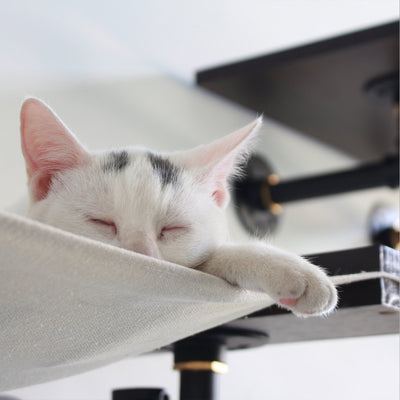When designing a cat wall, we need to ensure that the items are easy to implement and maintain while meeting the cat's needs. Here are some actionable tips and points to consider:
Practical Ideas
Multi-Level Design: Cats love to climb and explore, so create a multi-level cat wall to provide different heights for jumping and resting. This not only maximizes the use of vertical space, but also caters to the cat’s instinctive behavior.
Combine Observation and Resting Areas: Cats like to observe their surroundings from a high vantage point. Consider placing a cushioned observation platform at a certain height to serve as both a lookout point and a resting spot.

Flexible Layout: Use shelves and platforms with different functions to tailor the layout to your cat’s preferences and activity patterns. This flexibility allows the layout to be changed, maintaining the appeal of the cat wall.

Safe Transition Zones: Make sure the distance between shelves is manageable so cats can jump safely. Designing transition platforms or bridges can help kittens or older cats move around the structure more easily.

Precautions
Stability and Durability: Cat walls must be securely fastened to withstand the impact of a jumping cat. Use durable materials like solid wood or metal to protect against wear and tear.
Safety Edges: Make sure all shelves and platforms have smooth edges to prevent injuries when cats play.
Ease to Clean: Choose materials and designs that are easy to clean to maintain hygiene. Removable pad and cover for easy cleaning.
Space Utilization: Consider the living space of other family members when designing a cat wall to ensure it does not impede human activities.
By following these guidelines, you can design a practical, attractive, safe, and comfortable cat wall for your feline friend. Such a design will not only satisfy your cat's natural instincts but also add fun and vitality to your home environment.



